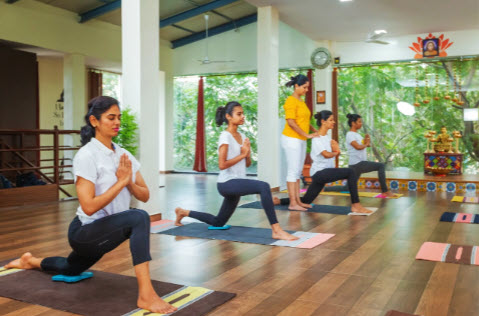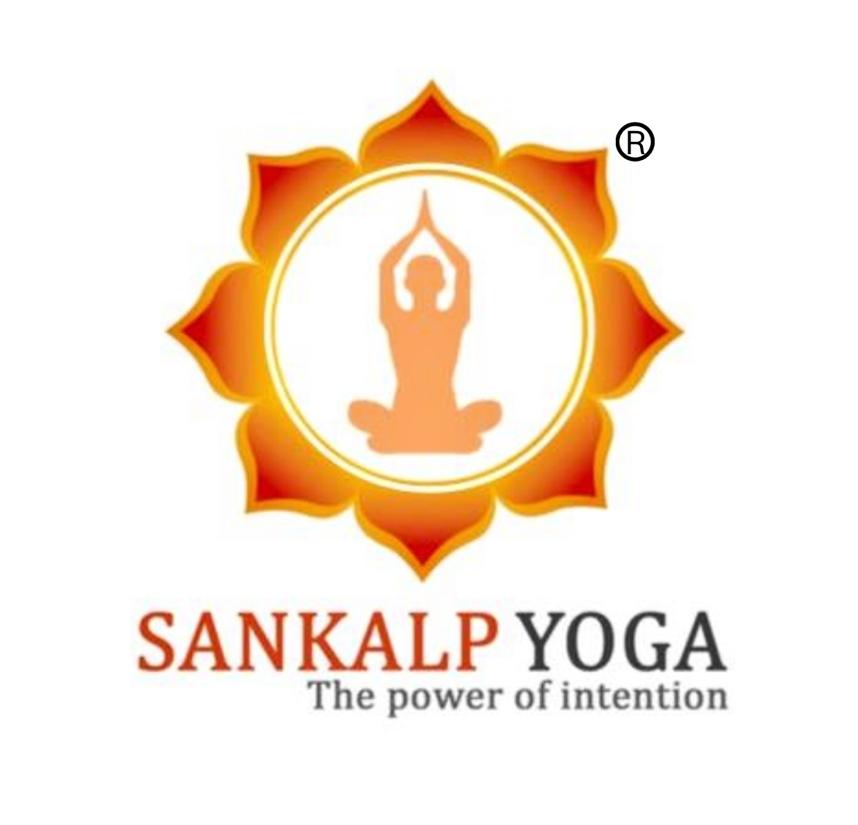HATHA, ASHTANGA YOGA

WHAT IS HATHA YOGA?
Hatha Yoga is about balancing the body and mind. ‘Ha’ represents the esoteric sun and ‘tha’ the moon. The practice of Hatha yoga aims to join, yoke, or balance these two energies.
Hatha means ‘force’ and is traditionally defined as ‘the yoga of force’, or ‘the means of attaining a state of yoga through force. It is the mastery of the body as a way of attaining a state of spiritual perfection in which the mind is withdrawn from external objects.
Traditionally, Hatha Yoga is a type of yoga that involves specific breathing techniques (Pranayama) a set of physical postures (Asanas) which are slow-paced focussing on proper alignment as well as greater static posture holds than Vinyasa flow or Ashtanga class.
HOW DID HATHA YOGA COME TO EXISTENCE
In the history of Yoga, Hatha Yoga is a fairly recent technique that has been developed from theories and techniques of Tantra Yoga. The Tantrics embraced the physical body as the means to achieve enlightenment and developed the physical-spiritual connections and body-centered practices that led to Hatha Yoga.
GOALS AND BENEFITS OF HATHA YOGA
The ultimate goal of Hatha Yoga is to direct the vital energy into the central channel and draw it up towards the crown chakra. It teaches the esoteric exercises of breath retention, Bandhas and Mudras that would channel and raise one’s energy levels high enough to attain enlightenment.
Hatha practices are designed to align, cleanse and calm your body, mind, and spirit in order to achieve deeper states of meditation and spiritual realization. A regular practice can improve strength, stamina, flexibility, range of motion, and balance; reduce stress; promote mental calm; and provide many other therapeutic benefits as well.
STRUCTURE OF HATHA YOGA
Hatha Yoga is the six-limbed yoga (Shatanga Yoga) mentioned below,
- Asana – steady comfortable state of body and mind
- Pranayama – expansion of capacity to retain Prana
- Pratyahara – withdrawal from the sensory input
- Dharana – bringing the mind to one single point
- Dhyana – observing the self
- Samadhi – becoming free from Maya
The first two limbs of Raja Yoga – Yamas & Niyamas are excluded in Hatha Yoga.
ASHTANGA YOGA
Ashtanga Yoga is an eight-limbed path toward achieving the state of Yoga, meaning union or oneness. It is defined in the ancient text Yoga Sutras of Patañjali, compiled by Sage Patañjali around 200 CE. The Yoga Sutras consist of 196 short statements, divided into four books, explaining the theory and practice of Yoga. The ultimate goal of Yoga is to still the mind and experience unity with the Universal Mind.
The eight limbs of Ashtanga Yoga are:
- Yama: Observances regarding how the practitioner should relate to the community, including non-violence, truthfulness, non-stealing, conservation of energy, and non-hoarding.
- Niyama: Intense observances to be carried out in daily life for a body and mind suitable for Yoga, such as cleanliness, contentment, discipline, self-study, and surrender to the Divine.
- Asana: Meditative and physical postures that promote stillness of mind and facilitate sitting for long periods.
- Pranayama: Breathing practices that extend and control the life force or breath.
- Pratyahara: Withdrawal of the senses from external distractions to turn inward.
- Dharana: Concentration on a single object, ideally of a spiritual nature.
- Dhyana: Uninterrupted meditation in which the meditator begins to merge with the object of meditation.
- Samadhi: A state of super-conscious trance where the mind fully merges with the object of meditation.
At New Vibe Yoga, students begin with the third limb, asana, as an accessible entry point. Asana has physical benefits and is relatable to most people. The eight limbs progress from outer to inner, from our relationships with others to our divine essence.
In Ashtanga Vinyasa Yoga, movement and breath are united (vinyasa). Other key elements include Ujjayi Pranayama (audible breath), drishti (focused gaze), tristhana (three places of attention), and bandhas (energy locks). Ashtanga classes are often taught in the “Mysore style,” where students memorize and work through the sequence at their own pace, with the teacher providing adjustments and support.
Ashtanga Yoga is known for its vigorous and orderly practice, suitable for those seeking a dynamic and rigorous yoga experience.
